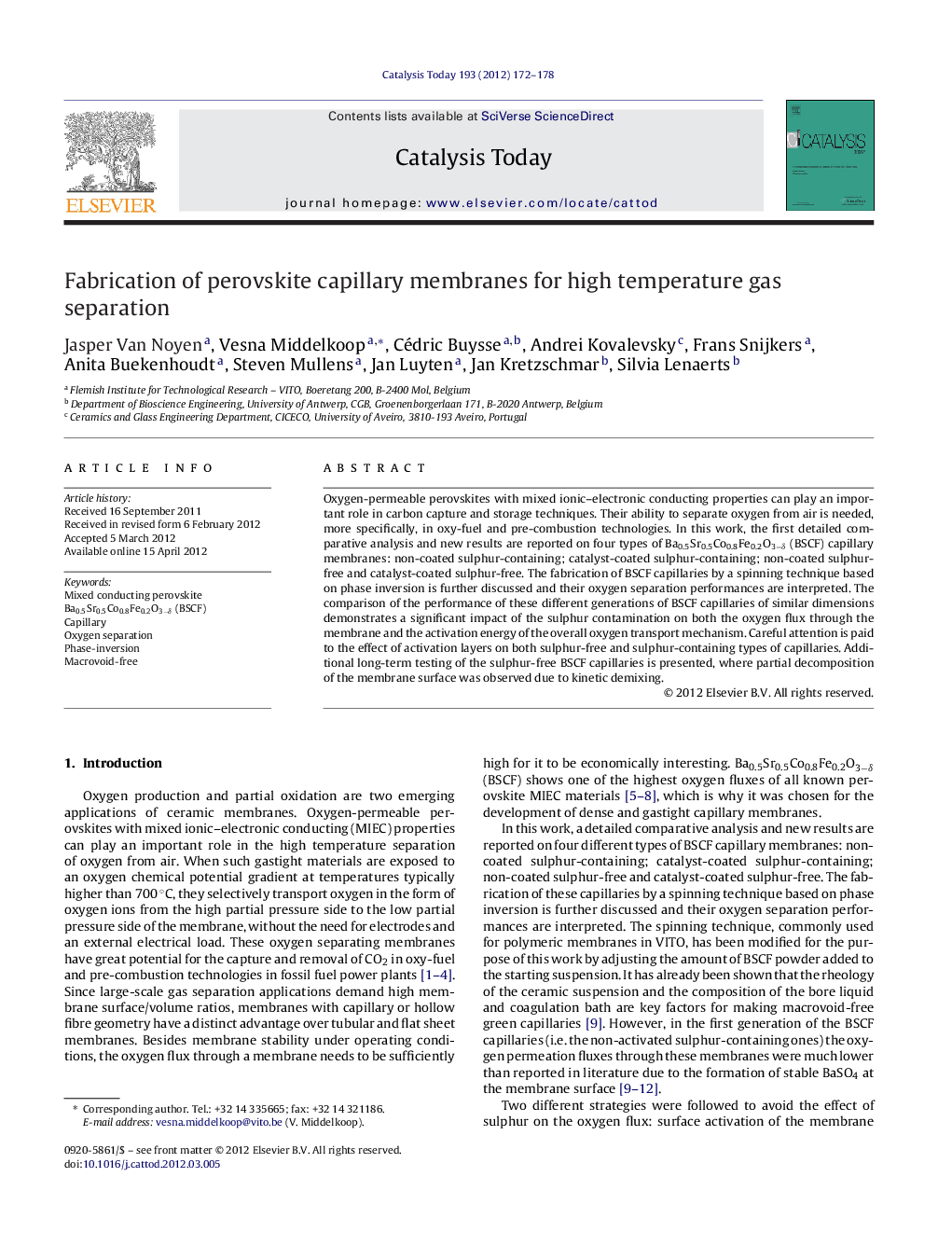| Article ID | Journal | Published Year | Pages | File Type |
|---|---|---|---|---|
| 55078 | Catalysis Today | 2012 | 7 Pages |
Oxygen-permeable perovskites with mixed ionic–electronic conducting properties can play an important role in carbon capture and storage techniques. Their ability to separate oxygen from air is needed, more specifically, in oxy-fuel and pre-combustion technologies. In this work, the first detailed comparative analysis and new results are reported on four types of Ba0.5Sr0.5Co0.8Fe0.2O3−δ (BSCF) capillary membranes: non-coated sulphur-containing; catalyst-coated sulphur-containing; non-coated sulphur-free and catalyst-coated sulphur-free. The fabrication of BSCF capillaries by a spinning technique based on phase inversion is further discussed and their oxygen separation performances are interpreted. The comparison of the performance of these different generations of BSCF capillaries of similar dimensions demonstrates a significant impact of the sulphur contamination on both the oxygen flux through the membrane and the activation energy of the overall oxygen transport mechanism. Careful attention is paid to the effect of activation layers on both sulphur-free and sulphur-containing types of capillaries. Additional long-term testing of the sulphur-free BSCF capillaries is presented, where partial decomposition of the membrane surface was observed due to kinetic demixing.
Graphical abstractFigure optionsDownload full-size imageDownload high-quality image (246 K)Download as PowerPoint slideHighlights► Optimisation of polymer solution/ceramic suspension gives macrovoid-free capillaries for various polymer/solvent/nonsolvent systems. ► Rheology of the suspension, composition of bore liquid and coagulation bath are key for making macrovoid-free capillaries. ► Impact of the S-contamination on the flux through the membrane and the Ea of the overall transport mechanism. ► Activation leads to a change of limiting step for the oxygen transport. ► Long term testing for the sulphur-free BSCF capillaries reveals reaction and partial decomposition of the membrane surface.
